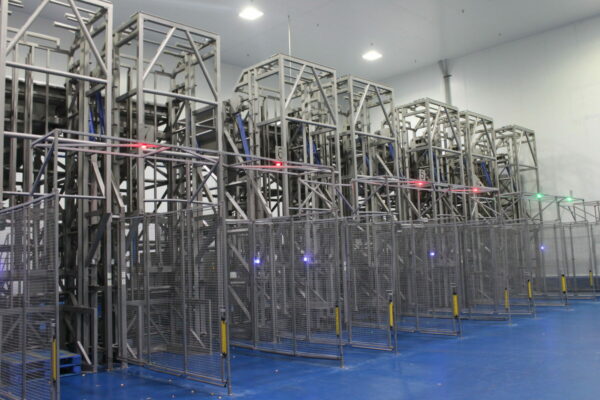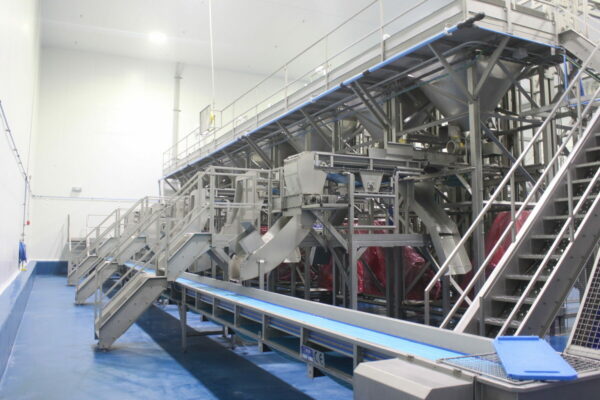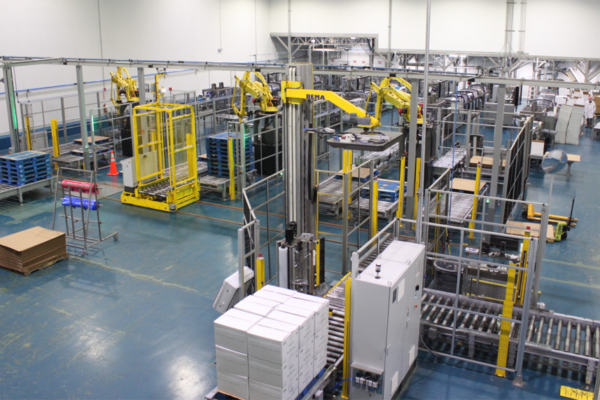When frozen food packager Blencor broke ground on its new cold storage facility in 2010, its Spanish and Peruvian owners looked outside the Southern Texas borderlines for its aesthetic inspiration. Turning to a European installation design, it turns out, isn’t easy.
With an output upwards of 70 million pounds per year in its first phase, Blencor blends and packages different frozen ingredients like broccoli, peas and carrots with flavorings and oils to create frozen culinary dishes on an industrial scale. In the process, the company parlayed the growing popularity of skillet meals and other similar steamable pouch dinners into a value-added vegetable boom, an impressive feat given the company’s relative short tenure in the U.S.
Found just west of Houston in Sealy, Texas, the Blencor facility became fully operational after an intensive three-year period designing and constructing it. In that time, everything from people flow to the logistics was planned and built.
The company modeled its new warehouse from a distinctly Euro set of constructs, but replicating a structure built under a European set of building codes in a country with its own set of building codes proved immediately challenging. “Food regulations in Europe are different than in the United States,” said Blencor’s Executive V.P. of Operations Shane Sampels. “Another important change was the material handling. A pallet in Europe is a different size than in the United States, so we had to make some adjustments into our racking system to handle the pallets.”
Drive-In Rack – which, along with Selective Rack, was the major installation component on this project – works best with a sturdy pallet. U.S. pallets are of a different structure and durability; the European pallets are usually built with stronger bases to prevent them from deflecting and breaking. Additionally, Blencor wanted the rack to withstand the weight of double-stacked pallets, which necessitated the unique challenge of welding a new channel into a standard frame arm.
In order to maintain the authenticity of the European warehouses, each pallet rack had to be specially engineered to conform to a pallet type uncustomary to the United States, a seemingly small detail that may have cost other companies both time and money had the problem gone undetected too long. Miguel Lopez, the Interlake Mecalux project manager, identified a potentially problematic redesign early in the process. Lopez noted the difference in size between European and U.S. pallets and consulted with Blencor’s engineers about the deviation. It was necessary to account for the difference in weight the rack would need to withstand. “I took some pictures,” Lopez said, “sent them to Blencor and they realized that some things they were doing in Europe they were not going to be able to do here.” Sampels echoed this sentiment remarking how quickly the two companies were able to identify issues, adjust and move forward. “Even during the installation, we found some engineering changes on our side. Interlake Mecalux accommodated us.”
Due to the nature of the project, Mecalux in Spain designed the unique racking system frame and the arm accommodating it and sent each design to a team of engineers in the U.S. for final approval. Once approvals were met and the installation began, having multiple preexisting templates for the facility proved to ease the completion. With one middle row of double-entry racks 35 bays wide, and two are 30-feet high, the final product scale was both impressive and unique to other warehouses within 1,000 miles of Sealy.
A year later, both companies have experienced the sweetest kind of déjà vu: Blencor’s packaging and blending facility has again experienced the same output growth as its Spanish predecessor, while Interlake Mecalux can again say it


.png)




